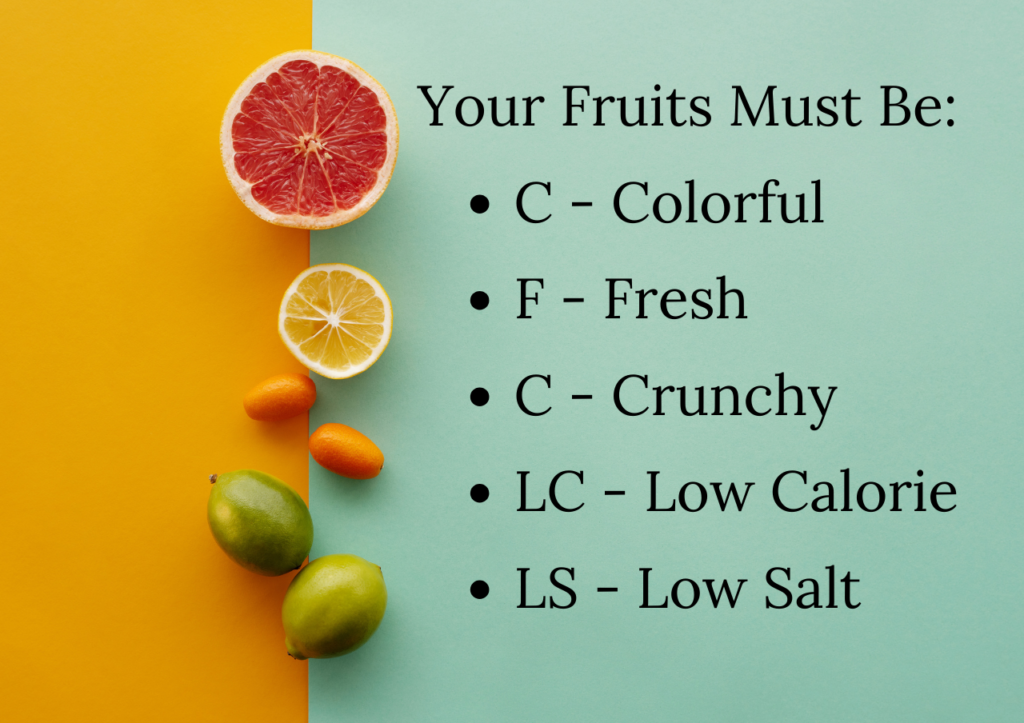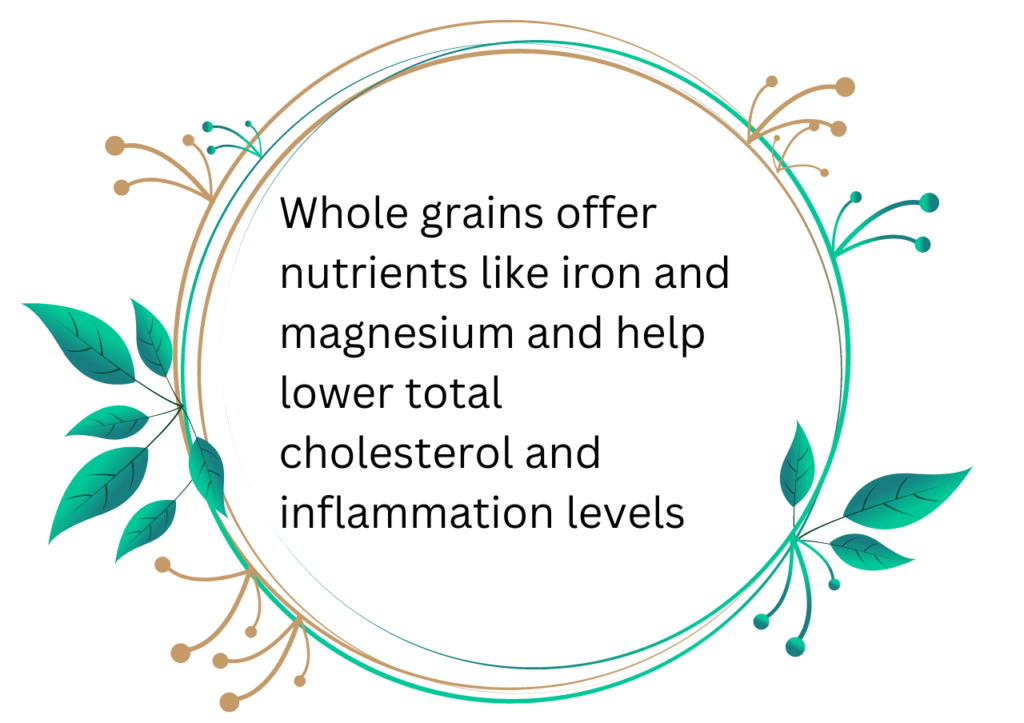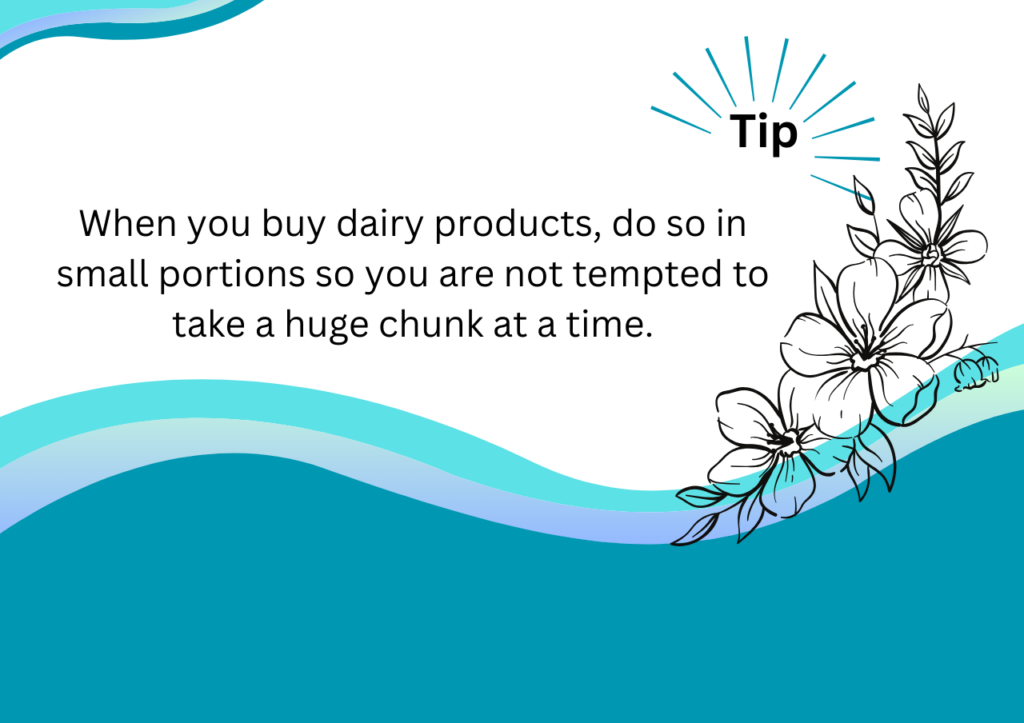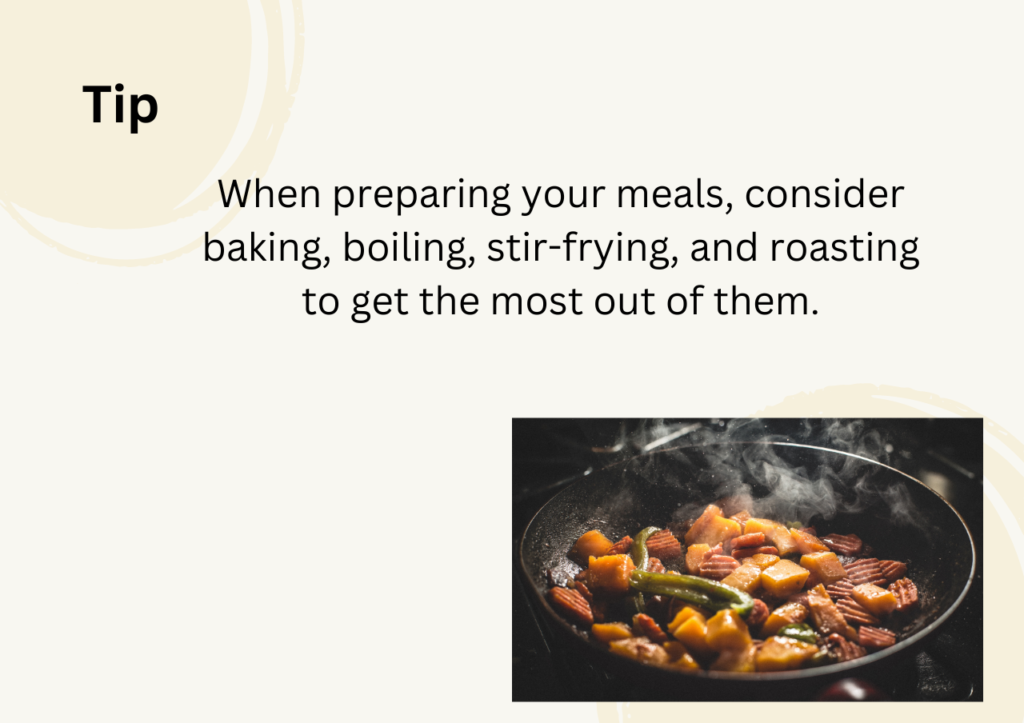Take control of your heart health, starting with what is on your dinner table. Discover delicious foods to fuel your heart for a healthy pulse and rhythm and those that could set you on a slippery slope.
Source: Brooke Lark, Unsplash
It’s no secret that our bodies reflect the choices we make. These choices, ranging from diets to sleep patterns and even exercise routines, contribute to our bodies’ health.
A healthy heart is at the centre of a healthy body. Your heart plays a central role in the grand scheme of health and wellness. It is the support system for everything your body does.
The heart participates in nearly all human functions by acting as the pumping controller of blood. It aids in transferring nutrients, fights diseases, transports waste products, etc. We could continue listing functions, but you understand the point now. Keeping the heart healthy means keeping your body healthy.
To reiterate just how important heart health is, Global Data From the American Heart Association has touted heart disease as a leading cause of death in the United States for more than a century.
Now, the stats above are not to scare you. This article is not about all that. It’s about the good news! It’s about feeding habits that help you avoid discomforting heart problems and achieve excellent health.
Below, you’ll discover seven foods to eat and seven to avoid for a healthy heart. (These recommendations are in tandem with the 2021 American Heart Association guidelines).
What Makes A Heart Healthy?

Source: Jesse Orrico, Unsplash
Before we dive into the bits and bobs of heart health, let us consider the indicators of a healthy heart. While these qualities are not the be-all of wellness, they give us a general idea. Some important attributes of a healthy heart include:
- Healthy and Efficient Pumping: One of the first elements of a healthy heart is how well it performs its primary function – blood circulation.
A healthy heart efficiently pumps blood throughout the body, delivering oxygen and nutrients to tissues and organs while removing waste products. Those with a healthy heart often spot pink fingers and toenails.
- Regular Heartbeat: Rhythm is another essential factor in understanding heart health. A steady and regular heartbeat is characteristic of a healthy heart. Irregular heart rhythms or palpitations may indicate underlying heart conditions that require medical attention.
- Optimal Blood Pressure: Blood pressure is the pressure exerted by circulating blood on carrying vessels. In its healthiest form, blood pressure pegs at 120/80 mmHg.
Anything way above the 120/80 mmHg threshold is hypertensive. High blood pressure can strain the heart and increase the risk of heart disease, while low blood pressure (hypotension) may indicate inadequate blood flow to vital organs.
- Balanced Cholesterol Levels: Healthy cholesterol levels, including low-density lipoprotein (LDL) and high-density lipoprotein (HDL), are essential for heart health.
Elevated LDL cholesterol levels are associated with an increased risk of plaque buildup in the arteries, while higher HDL cholesterol levels can help protect against heart disease.
Tip: Cholesterol levels refer to the amount of cholesterol in the bloodstream. Cholesterol is a waxy, fat-like substance produced by the liver and obtained from certain foods.
- Flexible and Clear Arteries: Healthy arteries are flexible and free from blockages caused by plaque buildup. Clear arteries ensure smooth blood flow, reducing cardiovascular risks such as heart attacks and strokes.
Tips: Arteries deliver oxygenated blood to body organs. Plaques in the blood are deposits of fatty substances, cholesterol, and cellular waste products, and they are more settled in arteries, blocking blood flow and increasing pressure.
- Optimal Heart Size and Shape: A healthy heart is of appropriate size and shape to pump blood throughout the body efficiently. Enlargement or abnormalities in heart size and structure may indicate underlying heart conditions that require evaluation and treatment.
The list of qualities of a healthy heart we have considered above is by no means exhaustive. Many other factors can indicate a healthy heart, but that is not the purpose of this article. If you want a comprehensive list of healthy heart qualities, click here.
Now that we’re clear on some indicators of a healthy heart, let’s dive into foods that can keep our hearts in great shape and those that do the exact opposite.
The Glorious Six – 6 Great Foods For Your Heart
Colourful Fruits and Veggies
Source: Jacopo Maia, Unsplash
I’m all for delicious fruits and vegetables. I mean, who isn’t? Fruits are crunchy, flavorful, and colorful… there’s the right fruit for everyone, and the heart loves a good fruit, too!
Fruits and vegetables contain a healthy amount of nutrients and are low in calories and salt; those are great combinations. While calories are like healthy bombs, giving us a welcome shot of energy, excessive caloric intake can increase body weight and overload the heart with more work.
The great news about fruits and vegetables is that there are so many to choose from. They are available if you want some greens, kale, broccoli, spinach, and apples.
Perhaps you love something colorful. Fruits like oranges and veggies like carrots, sweet potatoes, and cantaloupe will bless your plates with some colour. If you are a sucker for sumptuous-tasting fruits, you have grapes, berries, kiwi, and so much more to choose from.
With fruits and vegetables, you are spoilt for choice wherever you look.

Whole Grains
Source: Wesual Click, Unsplash
Heart-friendly foods do not stop at fruits alone. Whole grains are great for the heart. These meals are rich in dietary fibre, balance blood sugar levels, and offer a healthy amount of antioxidants.
Since whole grains are fiber-full, they digest slowly, will keep you full for long periods, and put a break on your appetite.
Whole grains also provide the heart’s best friend, Vitamin B. This vitamin gives the heart the energy and support it needs to function healthily. Familiar sources of whole grains are oatmeal, whole wheat, barley, and brown rice.

Beans
Beans are great for your heart. These kidney-shaped, nutrient-rich meals are great options for a hearty addition.
When considering great foods for your heart, avoiding fat and excess calories should be your priority. Beans are a perfect way for you to do just that. These beautiful legumes offer you protein without extra calories and fat from meats.
You may be tempted to buy canned beans, but if you do, buy the salt-free ones and rinse them off. Buying salted beans defeats the purpose of what we are going for – foods with minimal salt.
Healthy Vegetable Oils
Healthy foods are as healthy as how you prep them and choose to cook them. When you stir your delicious meals, do so with vegetable oils instead of margarine, butter, or lard.
Corn, Soybean, vegetable, olive, and low-cholesterol oils are a few pure oils that could give your food the glitter and your heart the shine.

Nuts
Source: Maddi Bazzoco, Unsplash
Crunchy, delicious, and filling, nuts are an excellent source of fats, proteins, and nutrients. Nuts contain unsaturated fats, including monosaturated and polyunsaturated fats.
These fats have proven to improve blood lipid profiles by lowering LDL cholesterol levels (the “bad” cholesterol) and increasing HDL cholesterol levels (the “good” cholesterol).
Nuts are rich in dietary fibre, which helps promote heart health in several ways. Fibre helps lower cholesterol levels by binding to cholesterol in the digestive tract and removing it from the body. Walnuts, pistachios, almonds, hazelnuts, and cashew nuts all deliver great nutritional benefits.
For all the benefits of nuts, it is important to temper your consumption. Nuts are high in calories, so excess consumption of this crunchy goodness can lead to a swift buildup of calories.
Tips: What are bad and good cholesterol? I hear you ask. Bad cholesterol transports cholesterol from the liver to cells, where it can accumulate in arteries and contribute to plaque buildup, increasing the risk of heart disease.
Good cholesterol, on the other hand, transports cholesterol from the bloodstream back to the liver for disposal, helping to prevent plaque buildup and reducing the risk of heart disease.
Herb Blends
Source: Annie Spratt, Unsplash
Of course, no healthy food list is complete without fresh herbs. Cutting bad foods for your heart means letting go of excess salt, which many of us find challenging (me included). The common excuse is, “Oh, salt adds flavours… it adds that bit of oomph.”
Well, I’ve got good news for salt lovers out there. Herbs deliver an even better seasoning experience without (Yep! you’ve guessed it) the salt.
Salt contains sodium. When sodium levels increase, water intake also increases, leading to elevated blood volume. Elevated blood volume raises the blood pressure on blood vessels as well; accumulating these incidents may lead to a long-term rise in blood pressure.
Herbs and spices like garlic, curry, ginger, parsley, oregano, and thyme provide excellent flavour depth to nutrient-rich meals.

Six Foods To Avoid For Great Heart Health
We’ve done a great job discovering foods that guarantee our heart’s health.
From spicy herbs to nourishing nuts and colourful fruits, many excellent meal choices are available—nutrient-wise, taste-wise, and, importantly, health-wise.
The opposite spectrum of great healthy foods is the unhealthy ones. These unhealthy foods are often available on demand and the “easy way out.” They are convenient in the moment (dare I say) but detrimental in the long run.
Some foods to avoid for your heart health include:
Salty Condiments and Additives
Picking off from where we left off in the past section, salty condiments and additives are bad, bad, bad for your health.
We’ve already considered how excess salts trigger a series of unhealthy heart activities due to their sodium components.
I’ll be the first to accept that salt makes every meal taste good. Even a slight drizzle could make the soggiest meal great, but is a bit of salt worth the trouble afterwards? I don’t think so, and neither should you.
Soy sauce, salad dressings, and fast food are some of the worst offenders in the salt pandemic list.
Tips: Instead of whipping out salty foods at the slightest inconvenience, make your toppings when you make your next meal. Examine the salt content of every package and use salt-free flavourings as we have listed above.
Cheese and Cream

Source: Mike Dierken, Unsplash
Cheese and cream are excellent protein sources. They offer bone-building vitamins and Vitamin D. For all the benefits cheese and cream delivers, the sort of dairy you buy separates benefits from trouble.
Whole milk, ice cream, butter, and cream contain saturated fat, elevating the body’s dangerous LDL cholesterol levels.

Processed Meats

Source: De An Sun, Unsplash
One of your heart’s worst enemies is processed meats.
Bacon, sausages, and hot dogs are the most common culprits in American households. These three bad boys are processed to last for extended periods. These meats are salted, smoked, and infused with multiple chemicals to make them last.
Most preservatives that make processed meats last are harmful to your body. Processed meats, such as bacon, sausage, hot dogs, and deli meats, are typically high in sodium. Excessive sodium intake can lead to high blood pressure (hypertension), a significant risk factor for heart disease and stroke.
The additives in processed meats suppress their nutrient contents. Imagine dipping a piece of meat into multiple chemicals, each replacing all the nutrients in your meat. What are you left with? Nothing.
Processed meats tend to be lower in beneficial nutrients such as fibre, vitamins, and minerals compared to unprocessed or minimally processed meats, such as lean cuts of poultry, fish, and legumes.

Sweets

Source: FlyD, Unsplash
Our best snacks are cookies, candy, Coke, soda, and cake. They are great to eat, available everywhere, and a fantastic choice for calling out our inner child.
For all the childhood memories and fun sweets provide, sweets present in sugary foods are bad for health and contribute to obesity. Sugar elevates blood pressure, leads to inflammation and increases your risk of heart disease.
Consuming sweets causes a rapid increase in blood sugar levels, which triggers the release of insulin to help cells absorb glucose. Over time, repeated spikes in blood sugar and insulin levels can lead to insulin resistance, a condition associated with an increased risk of heart disease.
If excess sugar is wrong, how much sugar is enough? According to the American Heart Association, women can consume six teaspoons of added sugar daily, while men should consume less than nine teaspoons.
Fried Foods
Source: Ashwini Chaudhary (Monty), Unsplash
Yet another naughty character on our food-to-avoid list is fried foods. The moment you dip your fresh chips or drumstick in a deep fryer, you elevate the fatty content of your foods by a mile.
Regularly consuming fried foods can result in rapid weight gain and increased blood pressure.

Water
Strange as it seems, water could be detrimental. Excess water does contribute to stress on the heart as it increases bodily fluid abnormally, forcing the heart to work overtime.
Excess water intake can increase blood volume and strain the heart. The heart then has to pump harder to compensate for and circulate the increased blood volume throughout the body, which can lead to increased cardiac output and elevated blood pressure.
Over time, this increased workload on the heart can contribute to the development of heart failure, a condition in which the heart cannot pump blood effectively to meet the body’s needs.
Tip: It is advised that men take about 3.7 litres of water for men daily and 2.7 litres for women.
The fact that these foods appear on our naughty list does not mean you cannot take them at all. It is important to take them in controlled quantities while tempering them with healthy foods.
How Do You Know A Food Is Good For Your Heart?
Source: Daria Volkova, Unsplash
Imagine strolling through a supermarket, cart in hand, searching for healthy foods. You try to check the packaging, but everything seems vaguely spelt out, with tags like ‘sugar-free’, ‘natural’, and ‘organic’ thrown around at the slightest inconvenience—they are almost too good to be true.
In these moments of indecision, you wish you had a foolproof way of knowing what food is excellent for you and which isn’t.
Of course, “healthy food” differs for each person, but we can agree that vitamins and nutrients are always essential components of healthy foods.
Many of us aren’t nutritional experts, so we could do it with help interpreting a label. When you get on the bumpy ride on your next food purchase, consider the seven factors below.
Study The Ingredient List
To identify a healthy meal, you must start from its foundation—the ingredient list. The ingredient list itemizes the components of a meal in order of quantity. So, if a meal has salt at the top of its ingredient list, it contains salt the most.
Consider The Ingredient List Length
If you need more time to study each ingredient in your meal, consider the length of the ingredient list. A lengthy ingredient list means you get the meal in its purest form. Unidentifiable ingredients should be a huge “no buy” sign. The shorter the ingredient list, the better.
Pay Attention To The Type Of Fat
It is essential to check out the fat in your meal. When you study the fat components of your meal, you should focus on the right kind of fat.
Most consumers tend to avoid all kinds of fat, but if it is healthy, it makes a lot of sense. When selecting fatty ingredients, avoid trans and saturated fats and look for polyunsaturated and mono-unsaturated fats.
Search For The 100%
Check for 100% whole grains for carbohydrate-filled products and 100% fruit juice for drinks.
I advise that you check for 100% because every product can claim to be “grain-filled” or “fresh,” especially in bread and drinks. However, if the 100% prefix does not exist before the healthy component, there’s every chance that the element is simply making up the numbers.
If it is not “100%”, the rest are additives.
Think About The Time For Preparation
Let’s face it – nothing good comes easy – that is the same with food. Healthy foods are not always the fastest to cook, while the unhealthy ones may take as little as a minute to whip up and eat.
When you buy meals, consider those that require some prep time. Vegetables like pepper or coriander leaves, even in their simplest form, require some chopping and slicing before they are ready for consumption.
Having control over how a meal is prepared means you can make it as healthy as you want. This is not the case with unhealthy foods, where that choice is already made for you.
Study The Expiry Date
If any meal won’t go bad after a long time, there’s every chance the meal has replaced healthy vitamins with preservatives.
Products with extended shelf lives due to preservatives and artificial components are generally unhealthy. Foods like vegetables and fruits with shorter life spans exist in their most natural state.
Swerve Your Thoughts Away From Calorie Counts
When shopping, we often tend to be overtly conscious of calorie counting. It is the first and only thing we focus on when reading food labels and how we decide what’s good and what’s not.
Calories are not the be-all of great nutrition. They are simply an overall summary of what a food package contains and not a systematic breakdown of what the calories are made of. A product with lots of fibre eliminates the saturation of simple carbohydrates and sugary components.
Drawing The Curtain
As you choose your next meal, consciously decide to eat healthy.
Look beyond the sizzles and sweets that will only last for a moment and replace them with fresh foods that will make you feel great and become building blocks for your healthy future.
The call to healthy eating does not limit the range of flavours and cuisines you can explore. As you combine multiple fruits and vegetables, you’ll discover your niche—a taste that resonates with you. Once you have your unique flavour, you can knit your personality around it and see your body glow and feel fresh.
Finally, healthy living is not limited to feeding alone. It is an aggregation of every life decision we make each day. Deciding to exercise, walking a hundred steps every day, and sleeping consistently are all “small” decisions that’ll add up to define a healthy you.
Every bite we take is an opportunity to nourish our bodies and protect our hearts, guiding us toward a future filled with vitality and longevity. So, let’s savour the foods that love our hearts back and embark on a journey toward lifelong heart wellness.
FAQs
Why is it important to focus on heart-friendly foods?
Prioritising heart-friendly foods is crucial for maintaining cardiovascular health and reducing the risk of heart disease, which is a leading cause of mortality worldwide.
What are some examples of heart-friendly foods?
Heart-friendly foods include fruits, vegetables, whole grains, nuts, seeds, legumes, fatty fish rich in omega-3 fatty acids, lean poultry, and plant-based oils such as olive oil.
What makes these foods beneficial for heart health?
These foods are rich in nutrients such as fibre, antioxidants, vitamins, and minerals, which help reduce inflammation, lower cholesterol levels, regulate blood pressure, and support overall heart function.
Are there specific foods to avoid for a healthy heart?
Yes, foods high in saturated and trans fats, refined sugars, sodium, and processed meats should be limited as they can contribute to elevated cholesterol levels, hypertension, and other risk factors for heart disease.
How can I incorporate more heart-friendly foods into my diet?
You can incorporate heart-friendly foods into your diet by focusing on balanced meals that include a variety of fruits, vegetables, whole grains, lean proteins, and healthy fats. Experimenting with new recipes and cooking methods can also make healthy eating more enjoyable.
Are there any heart-friendly substitutes for unhealthy ingredients?
Yes, you can use several heart-friendly substitutes in cooking and baking. For example, you can use olive oil or avocado instead of butter, whole grains instead of refined grains, and herbs and spices instead of salt for flavuoring.
How can I make healthy choices when dining out or ordering takeout?
When dining out or ordering takeout, look for menu options that prioritize heart-friendly ingredients such as grilled or baked dishes, salads, and vegetable-based entrees. Ask about preparation methods and request modifications to accommodate your dietary preferences and restrictions.
Can I still enjoy treats and desserts while maintaining a heart-healthy diet?
Yes, you can enjoy treats and desserts in moderation as part of a balanced diet. Opt for homemade versions using heart-friendly ingredients like fruits, dark chocolate, and whole grains, and be mindful of portion sizes.
How does alcohol consumption affect heart health?
Moderate alcohol consumption, especially red wine, has been associated with certain heart-healthy benefits due to its antioxidant content. However, excessive alcohol intake can increase the risk of hypertension and other cardiovascular issues, so it’s essential to consume alcohol in moderation.
Should I consult with a healthcare professional before making significant dietary changes for heart health?
It’s always a good idea to consult with a healthcare professional, such as a registered dietitian or your primary care physician, before making significant dietary changes, especially if you have pre-existing health conditions or concerns about specific foods or nutrients.
They can provide personalized guidance and support based on your needs and goals.
